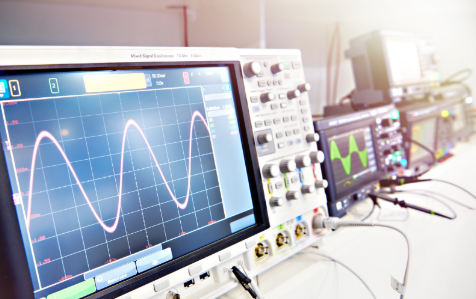Oscilloscopes are the unsung heroes of the electronics world. Without them, diagnosing and understanding electrical signals would be like trying to navigate a maze blindfolded. But what exactly is an oscilloscope, and why should engineers and hobbyists care about this piece of test and measurement equipment? Let’s break it down without short-circuiting your patience.
cbdtrapes | toprankeronline | michaelkorssitesaleonline | harleyhaze | topshows
What is an Oscilloscope?
An oscilloscope is a device that visualises electrical signals, showing how they change over time. Think of it as a heart monitor for electronics, where the screen displays a waveform representing the voltage of the signal. This waveform gives critical information about the signal’s behaviour, such as amplitude, frequency, and timing.
Oscilloscopes are used across industries—from testing circuits in mobile phones to troubleshooting complex medical devices. If it’s electronic and has wires, an oscilloscope has probably been used to test it at some point.
Why Oscilloscopes Are Essential for Engineers
Oscilloscopes aren’t just nice to have; they’re the bread and butter of test and measurement high-speed equipment. Here’s why they’re indispensable:
1. Debugging Circuits
When circuits misbehave, oscilloscopes help uncover the culprit. Is the voltage too low? Is the frequency off? A quick glance at the waveform can give you the answer. Whether you’re building gadgets at home or designing products in a lab, oscilloscopes save hours of guesswork.
2. Testing Signal Integrity
Signals can get messy in high-speed circuits. A high-speed oscilloscope ensures you can see the fine details, like signal distortion or unexpected noise, which might be wreaking havoc in your system. This is especially vital for applications like data transmission and advanced processors.
3. Understanding Power Usage
With an oscilloscope current probe, you can measure how much current flows through a circuit. This makes it easy to identify power hogs or optimise energy efficiency in your design. It’s the eco-friendly engineer’s best mate.
Key Features to Consider Before You Buy an Oscilloscope
Shopping for an oscilloscope can feel like picking the right tool out of a massive toolbox. Let’s simplify it:
Bandwidth
This determines the range of frequencies the oscilloscope can accurately measure. For high-speed circuits, a high-speed oscilloscope with a bandwidth of at least 1 GHz is a good choice.
Sample Rate
The sample rate shows how many data points the oscilloscope collects per second. The higher, the better for capturing fast-changing signals.
Channels
Think of channels as the number of eyes on your circuit. A 2-channel oscilloscope is great for basic tasks, but more channels are needed for complex systems.
Portability
Portable oscilloscopes have gained popularity for fieldwork. However, if your workspace is fixed, a benchtop model may offer better performance.
Probes
Oscilloscope probes are like antennas that connect the scope to the circuit. Different probes serve different needs. For measuring current, an oscilloscope current probe is your go-to.
Common Types of Oscilloscopes
Analogue Oscilloscopes
These are old-school but reliable. They display waveforms on a cathode-ray tube and are simple to use. However, they lack the advanced features of their digital counterparts.
Digital Storage Oscilloscopes (DSOs)
These are the most common types today. They digitise signals and display them on an LCD, offering features like saving data, zooming into waveforms, and advanced analysis.
Mixed Signal Oscilloscopes (MSOs)
Perfect for engineers working with both analogue and digital signals, MSOs combine features of DSOs with logic analysers, making them a two-in-one package.
High-Speed Oscilloscopes
For cutting-edge applications, high-speed oscilloscopes offer unmatched precision and bandwidth, ideal for fields like telecommunications and aerospace.
Practical Uses of Oscilloscopes
Oscilloscopes are vital for engineers, offering clear insights into electrical signals. In circuit design, they verify specifications, fine-tune components, and optimise prototypes. For power supplies, an oscilloscope current probe reveals current flow under different loads, identifying inefficiencies.
When troubleshooting, oscilloscopes act as detectives, exposing issues like voltage irregularities or timing errors. High-speed oscilloscopes capture fast-changing signals in modern applications, ensuring data integrity and performance. Their versatility makes them indispensable for diagnosing, testing, and refining electronic systems.
Tips for Getting the Most Out of Your Oscilloscope
- Use Proper Probes: Always match the probe to the task. For current measurements, invest in a quality oscilloscope current probe.
- Calibrate Regularly: Like a car needing a tune-up, oscilloscopes require calibration to maintain accuracy.
- Optimise Settings: Don’t leave everything on “auto.” Adjust settings like trigger levels and time base for clearer waveforms.
- Read the Manual: It might be boring, but knowing your oscilloscope’s features can open up possibilities you hadn’t considered.
Why Engineers Should Invest in Quality Test Equipment
Good test and measurement equipment is an investment, not an expense. A reliable oscilloscope will save you time, improve your designs, and help you deliver better results. Skimping on quality often leads to frustrations and unreliable readings, so buy an oscilloscope from trusted brands to ensure performance.
cactusgomel | theflirtyfoodie | weblimon | Shoppingscarts | plushmygift
What’s Next for Oscilloscopes?
Technology evolves, and oscilloscopes are no exception. Features like cloud connectivity and automated analysis are becoming common. These advancements aim to simplify complex tasks and help engineers focus on what matters most—innovating.
Ready to upgrade your test and measurement setup? Contact Genetron Corp for the latest in oscilloscopes, probes, and all the equipment you need to take your projects to the next level.

